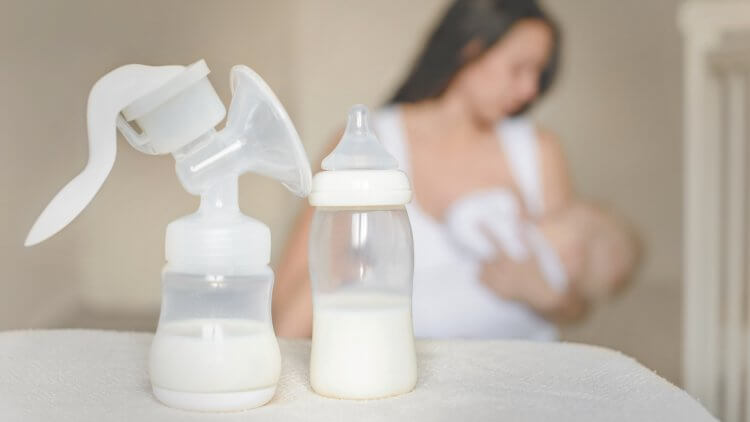If you’re a first-time mother, one of your first nurturing gestures will undoubtedly be feeding your child. Many women will be able to breastfeed their children after giving birth. It’s understandable that, even though nursing is natural, you might be concerned about providing your baby with enough nutrition. A million questions about how everything works and how to do it correctly are undoubtedly running through your head as well.
Breastfeeding is a long-term commitment that takes time and effort. Consult other moms, your nurse or midwife, a course conducted at the hospital or another support centre for assistance if you are having problems latching on to your baby or if the process is causing you discomfort. You and your child will benefit from breastfeeding if you do it. However, it should be a happy gesture, rather than one laden with dread and sadness, as it often is.
Our best recommendation is to take it easy, and you and your child will get the hang of things in due course. Our top 5 nursing tips for new mothers have been put together to ease your anxieties.
For more information, please read the full article below.
New mothers should be aware of 5 things when it comes to breastfeeding.

1. Get an Early Start
The initial few hours after your baby is born are critical for skin-to-skin bonding time as well as for establishing a strong breastfeeding relationship with your child. Although you will not be making milk at this time, your breasts contain colostrum, a thin fluid that contains nutrients and antibodies that he will need to fight illnesses in the early days of his development. Because a little goes a long way, baby only requires a few teaspoons at a time, which may be all you’re capable of preparing at the moment. The first two to three hours of a newborn’s life are spent breastfeeding them every two to three hours, and each session might last quite a long time. When the infant has completely drained at least one breast, you will know that feeding is complete. This can take anywhere between 20 and 45 minutes per feeding when it comes to babies. Take a breastfeeding class or course before your baby is born, if at all possible, to ensure that you are mentally prepared for the experience of breastfeeding.
2. Finding the Right Position

Breastfeeding is significantly more comfortable when you choose the most comfortable breastfeeding position for you. Experiment with a few different alternatives until you find the one that works best for you.
- Breastfeeding with no difficulty. Lie down and use your arms to support your child’s head, shoulders, and neck. Place the baby’s in front of your full front and allow gravity to take care of the remainder of the lifting. Placing the baby’s cheek against your breast will help to soothe it.
- Cradle grip. Hold your infant in your lap with her head resting on your elbow bend while nursing her. This is known as the “cradle grip.” Pillows should be used to raise the baby’s head to nipple level, and the opposite hand should cup your breast.
- Hold the crossover position. The hand opposite the breast that is now nursing the infant should be holding the baby’s head. Your wrist should be behind the baby’s shoulder blades, your thumb should be behind one ear, and your fingers should be behind the opposite ear. With your other hand, cup your breasts together.
- Football hold. If you’ve had a C-section, this is the best position for you. To nurse, use the hand on the side of the breast that is not feeding to lift the baby’s head to nipple level with her head towards you. Pillows might be utilised to assist in elevating the infant once more.
- Side-lying positive. This is a convenient posture to be in throughout the middle of the night (just make sure there is no loose bedding or pillows nearby). Mom and baby are sleeping on their sides, with their backs to one another. Cup your breasts with a hand you’re not lying on.
3. Avoid Engorgement

It is a painful swelling and stiffness of the breasts when your body produces more milk than your baby can use in a single day. Engorgement is most prevalent in the first few days after your baby is born when your milk is first starting to flow.
Because of the swelling, it may be more difficult for your infant to feed, increasing the possibility that the engorgement will last longer than expected. The most effective strategy to avoid this uncomfortable condition is to nurse your infant as frequently as possible. Engorgement may persist, in which case you could gently massage the areola between your fingers to hand-express breast milk. It may be beneficial to express milk while taking a warm shower to facilitate the milk flow. After failing the first time, try again with a pump and continue until your breasts soften and feel comfortable again, if possible.
4. The Availability of Milk

When it comes to new mothers, there is nothing more stressful than wondering whether their baby is getting enough breast milk. It can be tough to determine whether or not you are creating enough, but don’t be concerned. It is not necessary to measure your breast milk in order to be confident. We must remember that the ultimate goal of nursing is the development of your child, and even then, your child’s development is based on a variety of circumstances. Keep an eye on your child’s development, but don’t be too concerned about your yield. The type of food your kid consumes isn’t necessary; what matters is that they consume enough. The following are some additional measures you can take to ensure that your baby is well-fed:
- Count the number of diapers. The state of your child’s diapers can indicate a lot about their eating habits. A typical day for her should consist of six to twelve wet diapers and five yellow bowel motions.
- Look for signs of fussiness. If your baby is asleep and appears to be content, it is unlikely that feeding will be a problem for you. However, if she’s wailing and sucking her fingers vigorously, it’s likely that she’s still hungry.
- Regular check-ups with your paediatrician are recommended for your child. Your doctor will weigh your child during each well-baby check-up and record the weight and height on a growth chart. Your baby’s body weight will drop after birth due to fluid loss, but she should regain it within 10 to 14 days following birth. Babies should gain between 5 and 7 ounces per week during their first year.
5. Need Good Support

If you’re experiencing trouble breastfeeding, you’re not alone, and you won’t be the last person to experience this. Seek the assistance you require to deal with any difficulties that may emerge during your nursing journey. Several lactation consultants are available at hospitals and delivery centres; many will even come to your home if you request it. Attend a breastfeeding class or join a local mom’s club to learn more about how to breastfeed your child.
Nursing Your Baby: The Advantages of Breastfeeding Your Child

Your breast milk provides significant benefits to your baby’s health and development in various ways. They will receive the nutrition they require and the cells, hormones, and disease-fighting antibodies that will keep them healthy throughout their lives. Your body will become accustomed to the milk you produce over time. Your baby’s spit might even serve as a “status report” to your body, allowing it to modify the number of nutrients and antibodies in your milk to meet your baby’s changing requirements. Given that your body develops antibodies to combat the diseases that exist in your environment, your milk is specially formulated to treat the diseases to which your infant has been exposed.
Skin-to-skin contact with the mother while breastfeeding is vital for the newborn’s health. Not only does it provide your infant with a sensation of warmth, comfort, and security, but it also boosts the creation of oxytocin in your body, a hormone that helps keep you calm and aids in the development of breast milk in your breasts.
Benefits of Breastfeeding for Mom
Breastfeeding provides several advantages for new mothers as well. Starting with the obvious benefit of quickly satisfying your baby’s hunger without having to worry about bottles, sterilising bottle nipples, or mixing formula. This can also assist you in living a healthier lifestyle by lowering your risk of getting type 2 diabetes, some forms of breast cancer, and ovarian cancer. Postpartum haemorrhage can be reduced, and your uterus can be restored to its pre-pregnancy condition more quickly if you breastfeed.
Conclusion
Breastfeeding can be challenging at times, and we realise that. However, following the tips provided above can help you make the most of your time with your kid while you are breastfeeding. So pay attention to your child’s requirements, make yourself comfy, and relax. Check for indicators that breastfeeding is going well, and ensure you’re getting enough fluids to stay hydrated.
Remember, there’s nothing wrong with asking for help when you need it. If you follow these suggestions, you will see your baby thrive right in front of your eyes!











